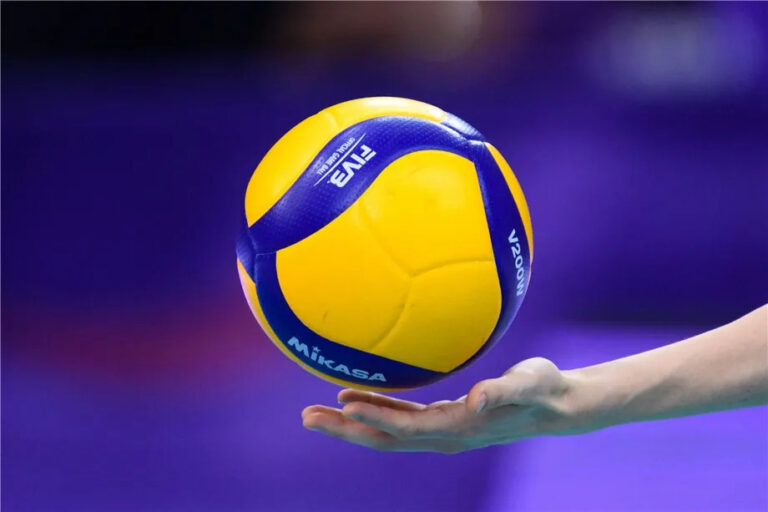Is Ballet a Sport? Demystifying the Athleticism and Artistry

Ballet is a form of art, not a sport. It requires coordination and strength but lacks competitive elements.
Ballet, a classical dance form, is often debated whether it should be classified as a sport. While it demands physical prowess and athletic abilities, its primary focus is on artistic expression and storytelling through graceful movements. This centuries-old performance art involves rigorous training, agility, and strength, which are also common in sports.
However, the distinction lies in the absence of competition in ballet, unlike in traditional sports. The debate over its classification continues, with proponents highlighting the physical demands and opponents emphasizing its artistic nature. Understanding the unique blend of athleticism and artistry in ballet can provide a fresh perspective on its position as a dance form rather than a sport.
PHYSICAL DEMANDS AND TRAINING
Ballet demands immense athleticism in terms of strength, flexibility, and endurance.
- Ballet requires precision in movements that engage various muscle groups.
- Strength training is vital for ballet dancers to perform lifts, jumps, and balances.
- Endurance is built through long hours of practice to maintain stamina throughout a performance.
Ballet shares similarities with traditional sports in terms of physical demands and training.
- Ballet dancers train rigorously like athletes to achieve peak performance.
- Both disciplines require dedication, discipline, and focus to excel in their respective fields.
- While sports focus on competition, ballet emphasizes artistic expression and storytelling.

COMPETITIONS AND PERFORMANCE
Ballet, often known for its grace and elegance, also involves fierce competitions and captivating performances that showcase the physicality and artistry of the dancers. These events not only highlight the athleticism required in ballet but also emphasize the expressive storytelling inherent in each performance.
BALLET COMPETITIONS
Ballet competitions are rigorous events where dancers demonstrate their technical skills, artistry, and stamina. These competitions, such as the prestigious Youth America Grand Prix and the Prix de Lausanne, provide a platform for young dancers to showcase their talent, compete for scholarships and contracts, and gain exposure to renowned ballet companies.
PHYSICALITY IN BALLET PERFORMANCES
- Ballet performances require immense physical strength, flexibility, and endurance, as dancers execute gravity-defying leaps, intricate turns, and challenging lifts.
- The incredible athleticism of ballet is showcased through the dancers’ ability to sustain long periods of intense movement while maintaining poise and control.
- During performances, dancers seamlessly combine meticulous technique with emotive storytelling, captivating audiences with their artistry and precision.
INJURY RISKS AND PREVENTION
Ballet is often regarded as a form of art or a graceful performance, but the physical demands it places on the body make it a highly athletic activity. Dancers undergo rigorous training to achieve the strength, flexibility, and precision required to execute complex movements with finesse. However, these demands also expose them to the risk of sustaining injuries. Understanding the common ballet injuries and strategies for injury prevention is essential for aspiring dancers and seasoned performers alike.
COMMON BALLET INJURIES
Ballet entails repetitive movements and strenuous positions that can lead to various types of injuries. Some of the most frequent injuries experienced by ballet dancers include:
- Ankle sprains
- Stress fractures
- Strained muscles
- Achilles tendonitis
- Back and spine injuries
- Foot and toe injuries
These injuries can result from overuse, improper technique, or inadequate rest and recovery. While some are acute injuries caused by sudden trauma, others develop gradually due to the repetitive nature of ballet movements.
STRATEGIES FOR INJURY PREVENTION
To minimize the risk of injuries, ballet dancers can implement various preventive measures, including:
- Proper warm-up and cool-down routines
- Cross-training to strengthen supporting muscles
- Regular stretching and flexibility exercises
- Correct alignment and posture awareness
- Adequate rest and recovery time
- Balanced nutrition to support physical demands
In addition to these measures, dancers should also pay attention to early signs of discomfort or pain, seeking appropriate medical care and guidance to prevent minor issues from developing into more serious injuries.
JUDGING CRITERIA AND SCORING
Judging criteria for ballet include technical proficiency, artistry, and execution. Although not considered a sport, ballet competitions use scoring systems to evaluate dancers’ performances. Each dancer’s routine is assessed based on precision, grace, and interpretation of the choreography.
Pertaining to ballet being a sport, it is essential to understand the criteria on which performances are judged and scored. In ballet, technical elements and artistic components play a vital role in determining the overall performance quality. Let’s delve into the specifics!
TECHNICAL ELEMENTS
In ballet competitions, the execution of technical aspects is meticulously evaluated. Dancers are assessed based on their precision, control, and agility during movements like pirouettes, grand jetés, and arabesques.
ARTISTIC COMPONENTS
Aside from technical prowess, artistic expression holds equal significance in ballet. Judges evaluate dancers’ emotional interpretation, musicality, and stage presence to gauge the depth of performance delivery. Technical Elements: 1. Precision in movements 2. Control during transitions 3. Agility in challenging sequences. Artistic Components: – Emotional interpretation – Musicality – Stage presence Keep these aspects in mind when pondering whether ballet truly embodies the essence of a sport.

PSYCHOLOGICAL AND EMOTIONAL ASPECTS
When it comes to discussing ballet, it is important not only to focus on the physical demands of the art form but also to consider the psychological and emotional aspects that dancers encounter. Ballet requires mental strength and emotional expression, which play a crucial role in the overall performance and experience of this beautiful art. Let’s delve into these two aspects in detail.
MENTAL STRENGTH IN BALLET
Ballet dancers need to possess exceptional mental strength to navigate the challenges that come with this demanding art form. From countless hours of practice to the discipline required for consistent improvement, ballet pushes dancers to their limits both physically and mentally. The mental strength required for ballet can be compared to that of professional athletes, as both require a highly focused mindset and the ability to perform under pressure.
In ballet, mental strength is cultivated through perseverance, self-discipline, and the ability to push through physical and mental barriers. Dancers must deal with self-criticism and the pressure to continually strive for perfection. They learn to cope with setbacks, adapt to different choreographic styles, and overcome the fear of failure. This mental fortitude allows them to excel in their performances and maintain a level of consistency, even in the face of challenges.
EMOTIONAL EXPRESSION IN BALLET
Ballet provides a unique platform for dancers to express a wide range of emotions. Through graceful and controlled movements, dancers communicate the story, mood, and emotions of a piece to the audience. This emotional expression not only adds depth and intensity to the performance but also allows the dancers themselves to create a powerful connection with the audience.
Whether it’s portraying a character’s joy, sorrow, love, or anger, dancers must tap into their own emotions and use their bodies to communicate these feelings effectively. The ability to connect with and convey emotions through movement is a skill that requires both technical proficiency and a deep understanding of the underlying emotional content of the choreography.
In addition to expressing emotions, ballet also serves as an outlet for dancers to explore and process their own emotions. The practice of ballet provides a cathartic experience, allowing dancers to channel their feelings and experiences into their performances. This emotional release can be both therapeutic and empowering, making ballet not just a physical activity but a means of emotional expression and personal growth.
BALLET AS AN ART FORM
Ballet is often regarded as a sport due to its physical demands and rigorous training. However, it is important to recognize ballet as not just a physical activity but also as an art form. Ballet combines athleticism with artistic interpretation, creativity, and expression, making it a unique and captivating form of art. In this section, we will explore the artistic aspects that set ballet apart from other physical pursuits.
ARTISTIC INTERPRETATION
Ballet allows for artistic interpretation by dancers, as they bring characters, stories, and emotions to life through their movements. Through the choreographer’s vision and the dancer’s execution, ballet transcends the physical and enters a realm of artistic storytelling. With each leap, turn, and arabesque, ballet dancers convey the emotions and essence of the performance, captivating the audience with their skill and grace.
CREATIVITY AND EXPRESSION
In ballet, creativity and expression are not only encouraged but essential. Dancers have the opportunity to infuse their own individuality and interpretation into every movement. Through subtle nuances and deliberate gestures, ballet dancers communicate their thoughts and feelings without uttering a single word. This unique form of expression allows ballet to communicate on a deeper level, connecting with audiences in a profound and emotional way.
In conclusion, ballet is not just a sport but also an art form that allows for artistic interpretation, creativity, and expression. The stunning visuals, combined with the physicality and emotional depth of ballet, make it a captivating and powerful performance art. Whether it is through the dancer’s artistry or the choreographer’s vision, ballet continues to mesmerize audiences worldwide with its seamless blend of athleticism and artistic expression.
FREQUENTLY ASKED QUESTIONS ON (IS BALLET A SPORT)
IS BALLET CONSIDERED A SPORT?
Ballet is widely recognized as a performing art rather than a sport due to its emphasis on artistic expression and storytelling.
WHAT ARE THE PHYSICAL DEMANDS OF BALLET?
Ballet requires immense physical strength, flexibility, and endurance to execute its intricate movements, jumps, and turns.
DO BALLET DANCERS TRAIN LIKE ATHLETES?
Yes, ballet dancers undergo rigorous training that includes strength conditioning, daily practice, and disciplined rehearsals, similar to athletes.
CAN BALLET COMPETITIONS BE CONSIDERED AS SPORTS EVENTS?
Although ballet competitions have elements of competition, they are still primarily viewed as artistic showcases rather than sporting events.
CONCLUSION
Ultimately, the debate continues on whether ballet is a sport or not. Regardless, ballet demands athleticism, dedication, and discipline. The physical and mental prowess required in ballet is akin to that of many traditional sports. Whether you view it as a sport or an art form, the passion for ballet remains undeniable.







